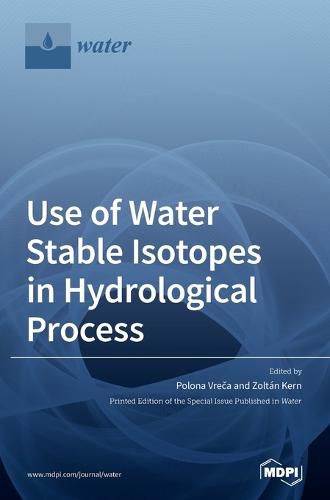Readings Newsletter
Become a Readings Member to make your shopping experience even easier.
Sign in or sign up for free!
You’re not far away from qualifying for FREE standard shipping within Australia
You’ve qualified for FREE standard shipping within Australia
The cart is loading…






This title is printed to order. This book may have been self-published. If so, we cannot guarantee the quality of the content. In the main most books will have gone through the editing process however some may not. We therefore suggest that you be aware of this before ordering this book. If in doubt check either the author or publisher’s details as we are unable to accept any returns unless they are faulty. Please contact us if you have any questions.
Stable and radioactive isotopes in water are powerful tools in the tracking of the path of water molecules through the whole water cycle. In the last decade, a considerable number of studies have been published on the use of water isotopes, and their number is ever-growing. The main reason is the development of new measurement techniques (i.e., laser absorption spectroscopy) that allow measurements of stable isotope ratios at ever-higher resolutions. Therefore, this compilation of papers has been published to address the current state-of-the-art water isotope methods, applications, and interpretations of hydrological processes, and to contribute to the rapidly growing repository of isotope data, which is important for future water resource management. We are pleased to present here a book with new findings in thirteen original research papers and one review paper issued in the Water MDPI Special Issue (SI) Use of Water Isotopes in Hydrological Processes . The authors report the use of water isotopes in hydrological processes worldwide, including studies at both local and regional scales related to either precipitation dynamics or to different applications of water isotopes in combination with other hydrochemical parameters in investigations of surface water, snowmelt, soil water, groundwater and xylem water to identify the hydrological and geochemical processes.
$9.00 standard shipping within Australia
FREE standard shipping within Australia for orders over $100.00
Express & International shipping calculated at checkout
This title is printed to order. This book may have been self-published. If so, we cannot guarantee the quality of the content. In the main most books will have gone through the editing process however some may not. We therefore suggest that you be aware of this before ordering this book. If in doubt check either the author or publisher’s details as we are unable to accept any returns unless they are faulty. Please contact us if you have any questions.
Stable and radioactive isotopes in water are powerful tools in the tracking of the path of water molecules through the whole water cycle. In the last decade, a considerable number of studies have been published on the use of water isotopes, and their number is ever-growing. The main reason is the development of new measurement techniques (i.e., laser absorption spectroscopy) that allow measurements of stable isotope ratios at ever-higher resolutions. Therefore, this compilation of papers has been published to address the current state-of-the-art water isotope methods, applications, and interpretations of hydrological processes, and to contribute to the rapidly growing repository of isotope data, which is important for future water resource management. We are pleased to present here a book with new findings in thirteen original research papers and one review paper issued in the Water MDPI Special Issue (SI) Use of Water Isotopes in Hydrological Processes . The authors report the use of water isotopes in hydrological processes worldwide, including studies at both local and regional scales related to either precipitation dynamics or to different applications of water isotopes in combination with other hydrochemical parameters in investigations of surface water, snowmelt, soil water, groundwater and xylem water to identify the hydrological and geochemical processes.